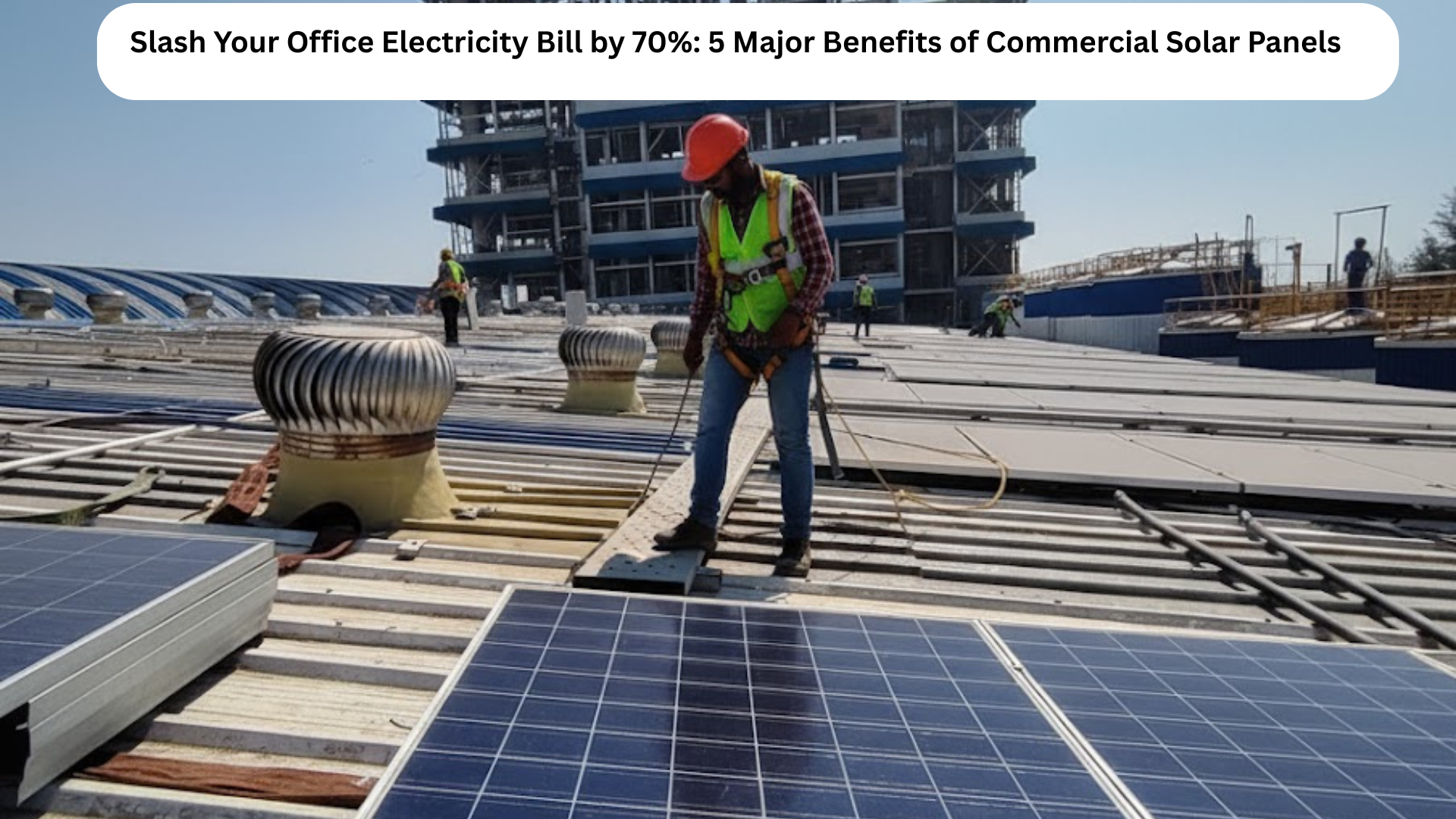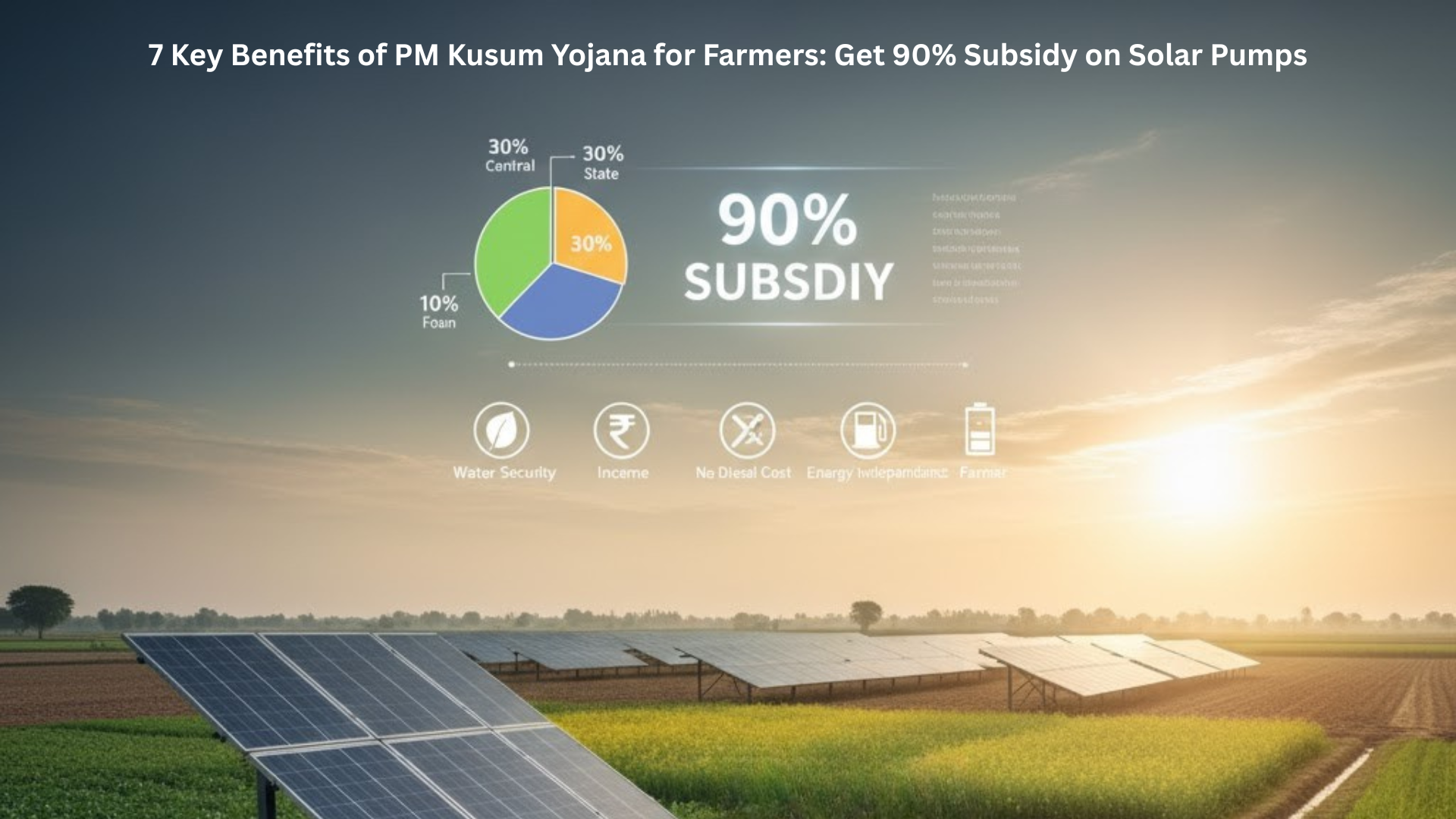Let’s be honest for a second. Do you get a small pit in your stomach every time you open your office electricity bill?You see the computers, the servers, the printers, and that big air conditioner running all day. If you’ve ever researched a solar panel for office solution, it was probably right after seeing that massive, unavoidable bill.
You know it’s a necessary cost of doing business. But as you watch that total amount creep up, 5% this year, 8% the next, it feels less like an expense and more like a punishment.
For most businesses, that monthly power bill is one of the biggest, most unpredictable, and completely uncontrollable operating costs. You’re just a price-taker, forced to pay whatever the utility company demands.
But what if you could change the rules? What if you could turn your biggest operational headache into your smartest financial asset?
Benefit #1: From a Crippling Expense to a Controlled Asset
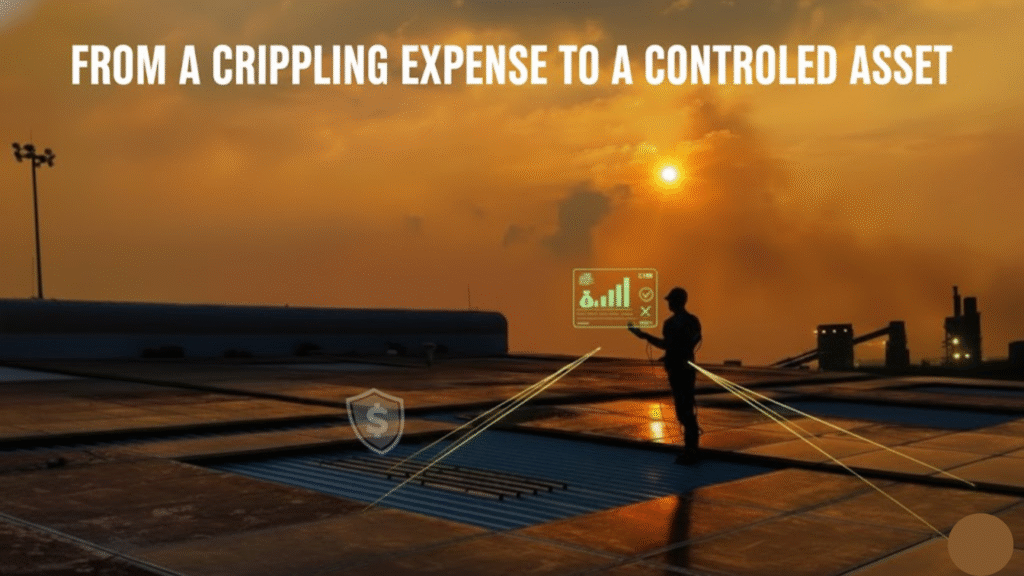
This is the most obvious benefit, but its scale is often misunderstood.
Your office and a solar panel system share the same work schedule. Your office is busiest from 9 AM to 6 PM. Solar panels generate their absolute maximum power from 9 AM to 5 PM. It’s a perfect match.
Think about your current bill. The vast majority of your energy consumption—the high-draw activities like running all your workstations, your AC units, and your lighting—happens during peak sunlight hours. This is the most expensive electricity to buy.
When you install a solar panel for office system, you’re not just buying power from the grid anymore. You are becoming your own power station.
How It Works: The “Net Metering” Miracle
In most places, a system called “Net Metering” is in effect. Here’s the simple, non-technical explanation:
- During the day: Your solar panels produce electricity. Your office uses this clean, free power first.
- If you make more power than you use: (Maybe during a lunch break or a sunny afternoon), that extra power is sent back to the grid.
- This is the magic part: When you send power back, your electricity meter literally spins backward. You are selling your excess power to the utility company at the same price they sell it to you.
- At night: Your panels are off. You pull power from the grid as usual. But, you’re only paying for the net difference between what you gave the grid and what you took.
For many offices, daytime consumption is the bulk of the bill. By generating your own power during these peak hours, you effectively wipe out 70%, 80%, or even 90% of your electricity cost. That 70% figure isn’t a marketing gimmick; it’s the direct result of matching your peak consumption with your own peak production.
Benefit #2: The CFO’s Dream: A Predictable ROI and a 25-Year Asset with a Solar Panel for Office
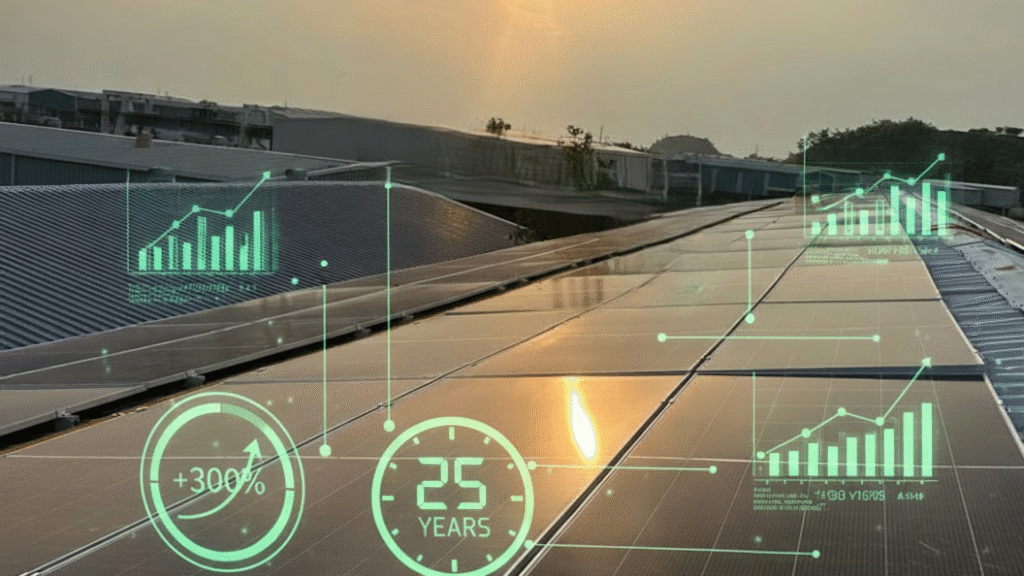
Okay, let’s talk about the elephant in the room: the upfront cost.
Yes, a commercial solar system is a significant investment. But let’s reframe that.
You are already paying for a solar system. You’re just paying for it in monthly installments to your utility company, and at the end of 25 years, you own absolutely nothing.
Investing in a solar panel for your office is simply deciding to pre-pay your electricity bill for the next 25 years at a massive discount.
Do the Payback Math for Your Solar Panel for Office
Let’s use some simple, conservative numbers.
- Your office pays an average of ₹50,000 per month on electricity.
- A solar system that can offset most of this costs, let’s say, ₹25,00,000. (This is just an example).
- You are now saving ₹50,000 a month, which is ₹6,00,000 per year.
In this scenario, your system pays for itself in just over 4 years.
Now, what happens in Year 5? And Year 6? And Year 20?
That’s ₹6,00,000 of pure profit, straight to your bottom line, every single year. A high-quality solar panel system has a performance warranty of 25 years.
Show me one other piece of office equipment you can buy today that will still be making you money in 25 years. Your computers will be obsolete. Your office furniture will be worn. That solar system will still be quietly turning sunlight into cash.
Solar as an Asset vs. An Expense
Let’s compare solar to other common office purchases.
| Feature | Standard Office Equipment (e.g., Server) | Commercial Solar System |
| Primary Function | Expense (To run the business) | Asset (Generates savings/profit) |
| Typical Lifespan | 5-7 Years | 25+ Years |
| Value in Year 10 | Obsolete (Zero or negative value) | Generating pure profit |
| Govt. Incentive? | Standard Depreciation | Accelerated Depreciation |
It’s an asset that locks in your energy costs at zero while your competitors are still subject to annual price hikes. It’s the definition of a strategic financial advantage.
Benefit #3: The Government Will Literally Help You Pay for It (Tax Benefits)
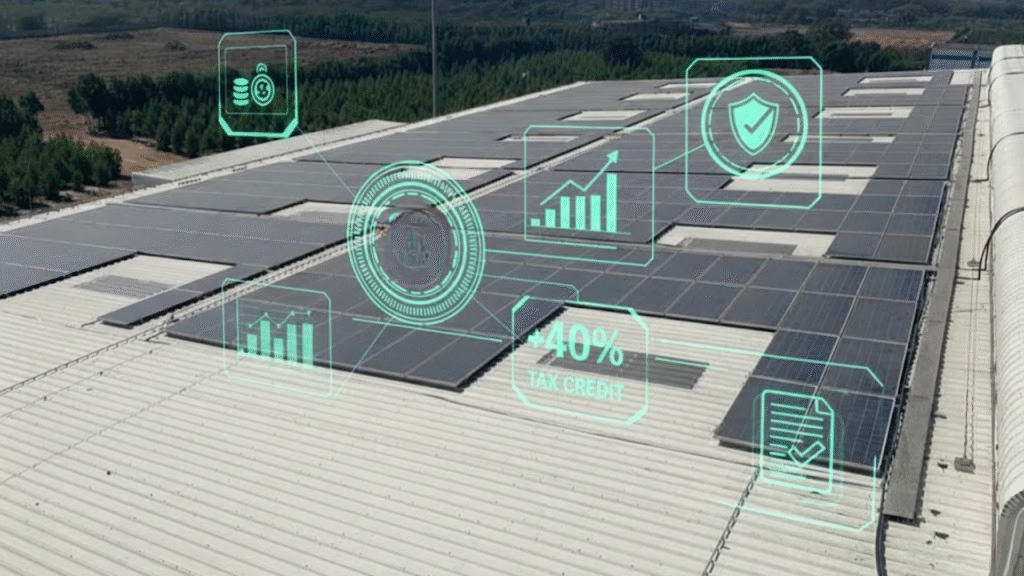
This is the part where the investment gets really good. Because businesses are the backbone of the economy, the government provides powerful incentives to encourage this kind of smart investment.
For a profitable company, the single biggest incentive is Accelerated Depreciation (AD).
A Simple Guide to Accelerated Depreciation
Normally, when you buy a big asset (like a company car or machinery), you have to “depreciate” its value over many years (e.g., 10-15% per year) for tax purposes.
With solar, the government puts this on steroids. They allow you to “depreciate” (or claim as an expense) a massive chunk of the system’s cost, often 40% or more, in the very first year.
What does this mean in plain English?
- Let’s say your system cost ₹25,00,000 and your company made a profit of ₹50,00,000.
- With 40% Accelerated Depreciation, you can claim ₹10,00,000 (40% of 25 Lakh) as an “expense” in Year 1.
- Your taxable profit is no longer ₹50,00,000. It’s now ₹40,00,000.
- If your company pays a 30% tax rate, you just saved ₹3,00,000 in cold, hard cash on your tax bill.
- Your “real” cost for that ₹25 Lakh system just dropped to ₹22 Lakh.
When you combine this massive tax shield with your monthly bill savings, that 4-year payback period suddenly looks a lot closer to 2.5 or 3 years. The government is, in effect, giving you a massive, immediate discount to make a smart decision.
Benefit #4: Stop Telling People You’re a “Green Brand.” Start Showing Them.

Today, every company has “We are sustainable” written somewhere on its website. It’s become a meaningless buzzword.
Now imagine a potential client visiting your office. They don’t just see a sign; they see the actual solar panels covering your roof.
Imagine a top-tier employee you’re trying to hire. They don’t just read your mission statement; they see a physical, undeniable billboard on your building that proves you are a forward-thinking company that invests in the future.
This isn’t “green-washing.” This is “green-doing.”
Installing a solar panel for office use is one of the most powerful marketing statements you can make.
- It builds trust with clients: B2B and B2C customers alike are actively choosing to partner with businesses that share their values.
- It attracts better talent: The best and brightest employees want to work for companies that are part of the solution, not part of the problem.
- It’s a story: It’s a post for LinkedIn, a photo for your website, a line in your email signature (“Our office is powered by 100% clean energy”).
In a crowded marketplace, this kind of tangible, visible commitment is a competitive differentiator that your rivals can’t just copy-paste onto their brochure.
Benefit #5: The Power is Out? Not for You. (Energy Independence)

What is the true cost of a 4-hour power cut?
Many businesses rely on a noisy, polluting, and expensive-to-run Diesel Generator (DG set) as a “solution.” A generator is a reactive fix to a constant problem.
A modern solar system, especially when paired with a battery backup or a hybrid inverter, is a proactive solution. It gives you Energy Independence.
You are no longer 100% at the mercy of a failing grid. While other businesses on your street are dark, your lights are on, your servers are running, and your team is productive. This is business continuity. It’s an insurance policy that, unlike every other insurance policy you pay for, actually pays you back every single day.
The Final Verdict: Is It an Expense or an Essential?
You can continue to treat electricity as an uncontrollable monthly expense, just another “cost of doing business.” You can keep paying whatever the utility monopoly wants to charge, watch your profits get eaten away, and cross your fingers that the power stays on.
Or, you can take control.
You can make a one-time investment that:
- Eliminates a massive operating cost.
- Gives you a guaranteed 25-year financial return.
- Comes with a massive government-funded discount.
- Builds your brand and attracts better clients.
- Protects your business from outages.
A solar panel for your office is no longer a luxury or an environmental statement. It is one of the single most intelligent, high-return, and strategic financial decisions a business can make today.
The only real question is, how much longer can you afford to keep throwing money away?
Frequently Asked Questions About Office Solar Panels
Q1: How many solar panels does my office need?
A: This isn’t a one-size-fits-all answer. The “right” number depends on three things: 1) Your average monthly electricity bill (how much power you use), 2) The amount of usable, shadow-free roof space you have, and 3) Your budget. A professional solar installer will conduct a free site audit to analyze your bills and roof to give you a precise system size, whether it’s 10kW, 50kW, or 100kW.
Q2: What if I don’t own the office building? Can I still get solar?
A: This is a common challenge, but you still have options. If you have a long-term lease, you can (and should) negotiate with the building owner. Many owners are willing to let you install panels (or even split the cost) because it adds permanent value to their property. In some regions, “Community Solar” programs are also available, allowing you to buy into a local solar project without installing anything on your roof.
Q3: Do solar panels work on cloudy or rainy days?
A: Yes, they just work less efficiently. Think of it like a cloudy day at the beach—you still get a sunburn, right? That’s because UV rays still get through. Solar panels will still produce power on cloudy days, just less than on a bright, sunny day. Your system is designed based on your area’s annual average sunlight, accounting for all the cloudy and rainy days.
Q4: How much maintenance do commercial solar panels require?
A: Very little! This is one of their best features. Solar panels have no moving parts and are extremely durable. The best maintenance is to have them professionally cleaned once or twice a year to remove dust, pollen, or bird droppings that might block the sun. Most high-quality systems also come with monitoring, so you can see from your computer that every panel is working perfectly.
